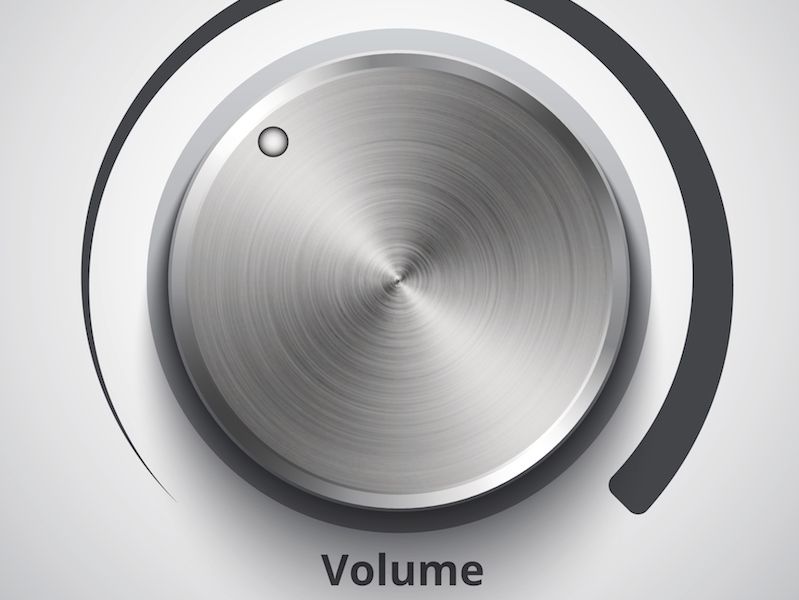
Have you ever seen the “Beware of Sharks” sign when you go to the ocean? It’s easy to realize that you should never dismiss a warning like that. A warning like that (especially if written in large, red letters) may even make you rethink your swim altogether. For some reason, though, it’s more challenging for people to heed warnings about their hearing in the same way.
Current studies have found that millions of individuals ignore warning signs when it comes to their hearing (there’s no doubt that this is a global problem, though this research was specifically done in the UK). Awareness is a huge part of the issue. It’s pretty intuitive to be scared of sharks. But fear of loud noise? And how do you recognize how loud is too loud?
We’re Surrounded by Hazardously Loud Sounds
It isn’t only the machine shop floor or rock concert that are dangerous to your hearing (although both of those venues are, indeed, harmful to your hearing). There are potential hazards with many common sounds. That’s because it isn’t exclusively the volume of a sound that presents a danger; it’s also the duration. Even lower-level sounds, such as dense city traffic, can be dangerous to your ears if you are exposed for more than a couple of hours.
keep reading to find out when sound gets too loud:
- 30 dB: This is the volume level you would find in normal conversation. You should be just fine around this level for an indefinite time period.
- 80 – 85 dB: An air conditioner, dense traffic, and lawn equipment are at this level of sound. This level of sound will normally become dangerous after two hours of exposure.
- 90 – 95 dB: Think of how loud a motorcycle is. 50 minutes is enough to be harmful at this volume.
- 100 dB: This is the level of sound you might experience from a mid-size sports event or an oncoming subway train (of course, this depends on the city). This volume can become hazardous after 15 minutes of exposure.
- 110 dB: Do you ever crank the volume on your earpods up to max? On most smartphones, that’s about this level. This level of exposure will become dangerous after only 5 minutes of exposure.
- 120 dB and over: Immediate pain and damage can happen at or above this level (think about an arena sized sporting event or rock show).
How Loud is 85 Decibels?
In general, you should regard anything 85 dB or louder as putting your ears at risk. The problem is that it isn’t always obvious just how loud 85 dB is. A shark is a tangible thing but sound isn’t so tangible.
And that’s one of the reasons why hearing warnings frequently go ignored, when the sound environment isn’t loud enough to cause pain, this is particularly true. Here are a couple of possible solutions:
- Download an app: There isn’t an app that’s going to directly protect your ears. But there are a number of free apps that can function as sound level monitors. Injury to your hearing can occur without you realizing it because it’s difficult to recognize just how loud 85 dB feels. Using this app to monitor sound levels, then, is the solution. This can help you develop a sense for when you’re going into the “danger zone” (and you will also discern right away when things are getting too noisy).
- Sufficient training and signage: This particularly pertains to workspaces. The significant hazards of hearing loss can be reinforced by signage and training (and the benefits of hearing protection). In addition, just how loud your workplace is, can be made clear by signage. Training can help employees know when hearing protection is needed or suggested.
If You’re in Doubt, Protect Yourself
Signage and apps aren’t a foolproof answer. So if you’re in doubt, take the time to safeguard your hearing. Over a long enough duration, noise damage will almost certainly create hearing problems. And these days, it’s never been easier to injure your ears (it’s a straight forward matter of listening to your tunes too loudly).
You shouldn’t raise the volume past half way, particularly if you’re listening all day. You need noise cancellation headphones if you are continually turning up the volume to block out background noise.
So when volume becomes too loud, it’s important to acknowledge it. Raising your own knowledge and awareness is the key if you want to do that. Safeguarding your ears, wearing earplugs, earmuffs, or decreasing your exposure, is not that difficult. That starts with a little knowledge of when you should do it.
Today that should also be easier. Particularly now that you understand what to look for.
Schedule a hearing examination right away if you think you may be suffering from hearing loss.

